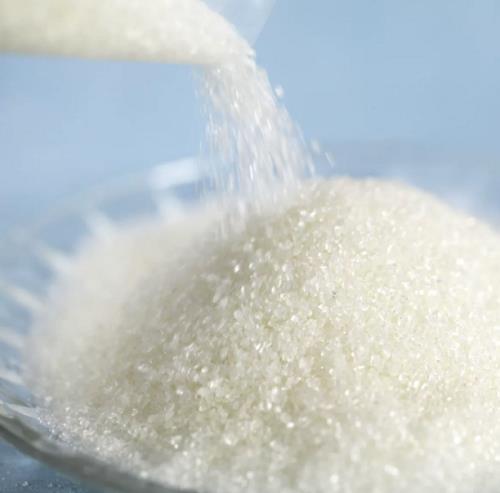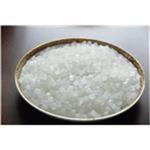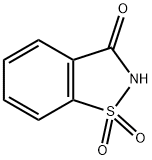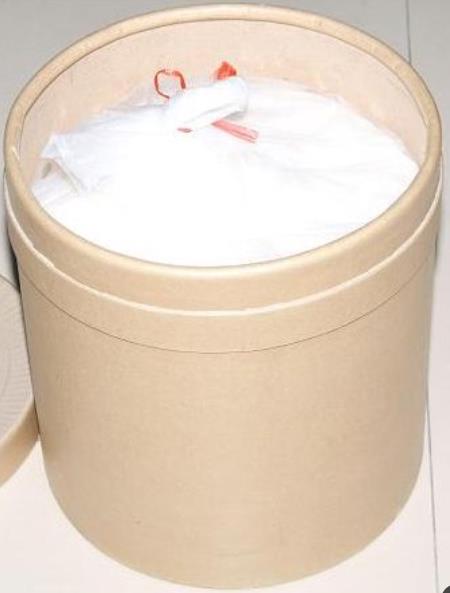Saccharin: Sugar Substitute
Saccharin is approved by the Food and Drug Administration (FDA) for use in drinks, drink mixes, and processed foods. It is also approved as a tabletop and baking sweetener. While saccharin is 200 to 700 times sweeter than sucrose (table sugar), it has a bitter aftertaste. Research in the 1970s linked saccharin with the onset of bladder cancer in lab rats. However, further studies proved that saccharin is safe for human use. Today, it is approved for use in more than 100 countries.[1]
Saccharin and Sugar: What Is the Connection?
Saccharin, like other artificial sweeteners, was made to create sweetness without adding calories the way sugar does. While saccharin is produced from chemicals in a laboratory, sugar is a natural substance derived from sugar cane, a tropical grass. Since saccharin is up to 700 times sweeter than sugar, a tiny amount of saccharin provides the same level of sweetness as a larger amount of sugar, but without the calories. While these substances do not contain calories, they also offer no beneficial nutrients like fiber, vitamins, minerals, or antioxidants.

When natural sugar is consumed, it is broken down into the simple sugars fructose and glucose so your body can use what it needs for energy. The remainder will be stored in different forms for future use. However, when you consume saccharin, it is not broken down or used for energy. Consumed saccharin passes through your body until it is excreted unchanged without providing calories. Saccharin also differs from Splenda (sucralose). Splenda stands out from other artificial sweeteners because it is manufactured from sugar. Only about 15% of consumed sucralose is absorbed, but it is not broken down into energy. Both absorbed and unabsorbed sucralose are excreted. Aspartame is another nonnutritive artificial sweetener. It compares to saccharin in the following ways: Aspartame is inappropriate for baked goods. Saccharin is heat-stable and appropriate for baking and cooking. Aspartame has 4 calories per gram. Saccharin has zero calories. People with a rare genetic disorder called phenylketonuria (PKU) disease, a difficulty metabolizing phenylalanine, should avoid or restrict aspartame. There are no such restrictions with saccharin.[2]
Saccharin Safety
Saccharin is approved by the FDA for use in foods. This approval is based on an exhaustive evaluation of the safety information available about saccharin. Saccharin is also approved as being safe for human use by the following global health authorities: European Commission's Scientific Committee on Food (now known as the European Food Safety Authority); Joint FAO (Food and Agriculture Organization)/WHO (World Health Organization) Expert Committee on Food Additives (JECFA); Japan's Ministry of Health, Labour, and Welfare Food Standards; Australia New Zealand and Health Canada; Many approvals occurred after controversial research in the 1970s challenged the safety of the human consumption of saccharin. These studies reported a link between saccharin and bladder cancer in male rats. However, subsequent observational research showed that the biological mechanisms likely for the link did not apply to humans. According to the FDA, the acceptable daily intake (ADI) for saccharin is 5 milligrams per kilogram (2.3 milligrams per pound) of body weight per day. The ADI represents the amount of a substance considered safe to consume daily throughout a person's lifetime without causing adverse effects or harm. Based on the recommended ADI for saccharin, a person weighing 132 pounds (60 kilograms) would have to consume 45 packets of saccharin to reach the ADI for saccharin.
Foods With Saccharin
Saccharin is most often found in foods and beverages promoted as being "sugar-free" or "diet," "light," or "reduced-calorie" products. It is approved for use as a sweetening agent in special foods under the following guidelines: No more than 12 milligrams of saccharin per fluid ounce in artificially sweetened beverages, fruit juice drinks, and bases or mixes prepared for consumption according to directions.;No more than 20 milligrams of saccharin per teaspoon of sugar-sweetening equivalency when used for cooking or as a table-top sweetener.;No more than 30 milligrams per serving of designated size in processed foods. The FDA has also approved the use of saccharin for the following technological purposes in certain consumed products:;To enhance flavors and reduce bulk in chewable vitamin tablets, chewable mineral tablets, or combinations. To retain physical properties and flavor in chewing gum.;To enhance the flavor of flavor chips used in non-standardized bakery products. The best way to determine whether a food product contains saccharin is to read the product's label. Any food or beverage containing saccharin includes its name and quantity used on the nutrition facts label.
Saccharin Alternatives
Including saccharin, the FDA has approved six artificial sweeteners for use in foods in the United States. Consider one of the following substances if you are seeking an alternative to saccharin: Aspartame: Sold under the brand names Nutrasweet, Equal, and Sugar Twin, aspartame is a synthetic sweetener composed of aspartic acid and phenylalanine. It is about 200 times sweeter than sucrose. Aspartame should be avoided by people with PKU. Advantame: Advantame is a synthetic sweetener produced in a three-step process that combines aspartame and HMPA (hexamethylphosphoramide). It is about 20,000 times sweeter than sucrose. This noncaloric food additive is heat stable, so advantame is a suitable sugar substitute for baked goods.; Neotame: Neotame is a noncaloric artificial sweetener. It is a compound called dipeptide methyl ester, which is derived from the amino acids aspartic acid and phenylalanine. Neotame is sold under the brand name Newtame. It is about 7,000 to 13,000 times sweeter than sucrose. Neotame is heat stable and appropriate for use in baked goods.; Sucralose: Sucralose is a sugar derivative produced by replacing 3 hydroxyl groups with 3 chlorine atoms on the sugar molecule. It is sold under the brand name Splenda. Sucralose is about 600 times sweeter than sucrose. It is heat stable.; Acesulfame potassium: Also called acesulfame-K or Ace-K, acesulfame potassium is a combination of an organic acid and potassium. It is a noncaloric artificial sweetener that is 200 times sweeter than sucrose. Acesulfame potassium is sold under the brand names Sunett and Sweet One.[3]
Reasons to Avoid Saccharin
While saccharin is deemed safe, there are a few reasons to consider an alternative to saccharin. Research suggests that long-term intake of saccharin, aspartame, or diet soda may increase deposits of subcutaneous (under your skin) body fat, visceral (between your internal organs) body fat, and intermuscular (visible within a muscle) body fat. It may also increase the risk of incident obesity independent of the quality of your diet or the amount of calories consumed. Research is inconclusive on the potential effects of saccharin on the gut microbiome and the possible consequences on health maintenance and disease status in humans. The gut microbiome plays an important role in the following functions: Stimulating your immune system; Breaking down potentially toxic food compounds; Protecting your body against disease-causing viruses; Producing vitamins; Converting nutrients from food into energy; Preventing digestive problems. Since there are no rules regarding nonnutritive sweeteners like saccharin during pregnancy, pregnant women should discuss the decision to use it with their healthcare provider. Saccharin crosses the placenta and may be absorbed by the developing fetus. There has been a link between nonnutritive sweeteners and an increased infant body mass index (BMI) at one year. Saccharin and other nonnutritive sweeteners have also been found in fetal cord blood and breast milk. Results of a 2019 study suggest that long-term saccharin use increases the risk of obesity, diabetes, liver damage, and kidney impairment. The results also suggest an increased risk of brain carcinogenesis.
References
[1] Kaur, K 和 Srivastava, S (2020). "Artificial sugar saccharin and its derivatives: role as a catalyst". RSC Advances, 10(60), pp.36571-36608.
[2] Banerjee, B; Bhardwaj, V; Singh, A (2019). "Catalytic Applications of Saccharin and its Derivatives in Organic Synthesis". Current Organic Chemistry, 23(28), pp.3191-3205.
[3] Dess, NK (1993). "Saccharins aversive taste in rats - evidence and implications". Neuroscience and Biobehavioral Reviews, 17(4), pp.359-372.
See also
Lastest Price from Saccharin manufacturers

US $1.00/kg2025-04-21
- CAS:
- 81-07-2
- Min. Order:
- 1kg
- Purity:
- 99%
- Supply Ability:
- 10 mt

US $6.00/kg2025-04-21
- CAS:
- 81-07-2
- Min. Order:
- 1kg
- Purity:
- 99%
- Supply Ability:
- 2000KG/Month


